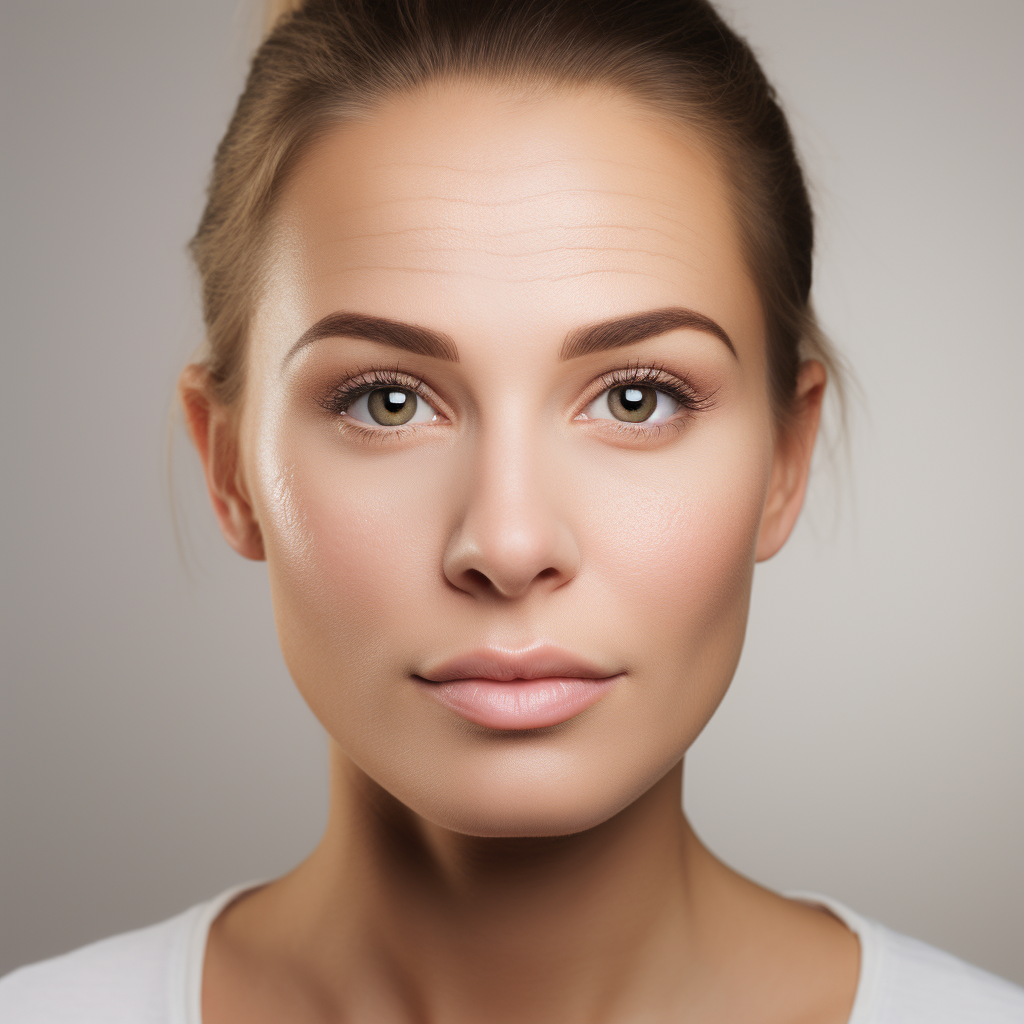
Introduction:
Botox is one of the most popular and commonly performed cosmetic treatments, with millions of procedures done every year. In this comprehensive guide, we will cover everything you need to know about Botox injections for smoothing wrinkles and fine lines on the face and neck. You’ll learn how Botox works, ideal treatment areas, what to expect during and after your injections, average costs per treatment, potential side effects to be aware of, and how long results last. We’ll also answer some of the most frequently asked questions about Botox so you can make an informed decision. Arm yourself with the facts so you can get natural-looking results and understand realistic expectations.
What is Botox and How Does it Work?
Key takeaways:
- Botox is the brand name for botulinum toxin type A, a protein and neurotoxin.
- It’s injected in very small doses into muscles to block nerve impulses, relaxing the muscles so they don’t contract. This smooths out overlying wrinkles.
- Results are temporary, lasting 3-6 months typically.
- Botox only affects the injected muscles, allowing natural facial expressions in untreated areas.
Ideal Areas for Botox Treatment
Botox for the Forehead
- The forehead is a top treatment area for Botox. Horizontal lines across the forehead, sometimes called the “elevens”, are smoothed by targeting the frontalis muscle.
- Injections to the forehead muscles can also provide an indirect brow lift effect by allowing the brows to relax into a slightly lifted position.
- Typical dosage is up to 30 units per treatment, with effects lasting 3-4 months on average.
- There may be some minor bruising, redness, or numbness after injections that resolve quickly.
Botox for Crows Feet and Frown Lines
- Botox can minimize the appearance of crow’s feet, the fine radial wrinkles that form at the outer corners of the eyes.
- It relaxes the orbicularis oculi muscles around the eyes to smooth stubborn crow’s feet and soften frown lines between the brows.
- About 6-12 units per side are typically used, providing results lasting 3-5 months.
- Some temporary and minor drooping of the eyelids or eyebrows could occur after, but resolves in 1-2 weeks.
Botox for Neck Bands and Lines
- The platysma muscles run down the neck and can develop vertical bands with age. Botox relaxes these muscles.
- Horizontal neck lines are also improved by targeting the platysmal bands. About 20-60 units are used.
- Effects generally last 3-4 months with routine touch-up injections.
- Side effects are usually minimal. Temporary tightness or muscle stiffness in the neck could occur.
Botox for Gummy Smile Reduction
- Gummy smiles showing excessive gingiva can be rebalanced with strategic Botox injections.
- It relaxes the levator labii superioris muscles that elevate the upper lip and nostrils.
- Roughly 10-30 units are needed for noticeable reduction in a gummy smile.
- Some asymmetry is possible initially but usually resolves within 1-2 weeks. Alternate anti-wrinkle options are also available.
What To Expect During Your Botox Appointment
The actual injection process only takes about 10-20 minutes. Here’s a quick rundown of what to expect when you go in for Botox:
- No anesthesia is required. A topical numbing cream can be applied first to make the injections more comfortable.
- Using a very fine needle, your provider will inject small amounts of Botox directly into the desired muscles in specific areas.
- Each injection feels like a quick pinprick or mosquito bite lasting a few seconds.
- Discomfort is usually minimal. Slight bruising at injection sites could occur which resolves quickly.
- Full effects are visible within a week after initial swelling and bruising subside. Results continue improving gradually over 2-3 weeks.
- Your appointment will conclude with scheduling a follow-up 2-3 weeks later to check your results.
Botox Results – What To Expect
Here’s an overview of what you can expect to experience after your Botox injections:
- Results are not instant. It takes 2-10 days for the muscles to begin relaxing as the Botox starts working. Maximum effect is seen at around day 14.
- Treated areas will show a smooth reduction in the appearance of fine lines and wrinkles. Results look soft and natural.
- You’ll still have full range of motion and be able to make facial expressions using your untreated muscles. The treated areas will be smooth but not frozen.
- Effect typically lasts 3-6 months. Repeat touch-up injections are needed to maintain results long-term.
- Some minor temporary side effects like headaches, eyelid drooping, numbness, or bruising could occur initially. These usually resolve within 1-2 weeks.
Botox Side Effects and Safety Information
When administered properly, Botox is considered safe with minimal risks. However, there are some potential temporary side effects to be aware of:
- Discomfort, swelling, bruising, redness at injection sites. This usually resolves within a few hours to 2-3 days. Using cold compresses helps.
- Mild headache and nausea immediately after injections. Tend to subside within a day.
- Muscle weakness resulting in a “heavy” brow or mild eyelid drooping. Usually resolves in 1-2 weeks as the Botox settles.
- Uneven appearance if some muscles are treated more than others. Usually temporary for a few weeks until the Botox diffuses.
- Irritation, rash, or flu-like illness. Rare when performed by an experienced provider using proper technique.
Seek prompt medical attention if you have serious or long-lasting side effects like trouble breathing or swallowing, hoarse voice, severe rash, or vision problems. If performed correctly, Botox is considered safe for long-term use.
How Much Does Botox Cost on Average?
The average cost per Botox treatment is between $300-$750 total. However, the price can vary considerably based on a number of factors:
- Geographic location – Urban areas like New York City or Chicago or Los Angeles tend to have higher prices than rural areas.
- Experience of the provider – Board-certified plastic surgeons or dermatologists often charge more than nurses, physician’s assistants, or medi-spas.
- Units injected – You’ll pay per unit. Forehead lines take ~20 units, Frown lines ~ 20 units, Crow’s feet ~12 units each, and Neck ~40 units.
- Volume discounts – Some providers offer discounted pricing for new and returning patients if you commit to a certain number of units per treatment.
When researching providers, be wary of prices that seem too good to be true. This may indicate diluted or poor quality Botox. Paying slightly more for an exceptional provider with proven results is better than risking subpar outcomes. Expect to pay in the range of $10-$20 per unit of Botox.
How To Choose The Right Botox Provider
Choosing an experienced provider with proper training is key to getting natural looking Botox results. Here are tips for selecting a qualified, reputable Botox injector in your area:
- Board-certified plastic surgeon or dermatologist – This ensures extensive medical training and knowledge of facial anatomy.
- Specializes in Botox injections – Look for a provider performing many cosmetic injections weekly to ensure experience and precision technique.
- Consistently positive online reviews – Pay attention to unfiltered reviews discussing their technique, staff, and results. Avoid places only showcasing curated testimonials.
- Shows before/after photos – Reputable injectors will provide past patient photos to showcase the improvements with Botox. Photos should look natural, not overly frozen.
- Uses in-office consultations – Beware of places offering Botox without an in-person evaluation. Your treatment plan should be customized.
- Explains precisely where they will inject – The injector should identify each muscle targeted and units needed per area.
- Uses medical-grade Botox – Some providers may cut costs by using watered down, unreliable Botox. Accept no substitutes for brand name Botox.
How Long Do Botox Results Last?
You can expect visible smoothing of lines and wrinkles for approximately 3-6 months after Botox injections. Here are some factors that influence how long Botox lasts:
- Treatment area – Areas that move more like the glabella and forehead tend to metabolize Botox faster than areas like crow’s feet.
- Units injected – More units means longer-lasting paralysis of the muscles before they recover.
- Metabolism – Those with faster metabolisms may burn through Botox quicker than people with naturally slower metabolisms.
- Provider technique – Precise injection into the belly of the muscle prolongs the effects compared to superficial injections.
- Activity level – If you engage frequently in expressive movement of the treated muscles, Botox may wear off sooner.
- Age – Younger patients with little native wrinkling tend to get longer lasting results from Botox.
Consistency is key for the best results long-term. Maintaining your appointments for touch-up injections every 3-6 months will keep those treated areas smooth. Contact your provider as soon as you feel the results fading to remain consistent.
Can I Combine Botox with Fillers?
Yes, it is common to combine Botox with injectable dermal fillers like Juvederm or Restylane for a complete facial rejuvenation. Here’s how the combination works:
- Botox relaxes muscles and improves dynamic wrinkles from movement – like glabellar “11” lines between the brows or crow’s feet.
- Fillers add lost volume and improve static wrinkles that persist even without motion – like nasolabial folds, smile lines, or cheeks.
- Combination treatments provide a synergistic effect for smoothing wrinkles and restoring plumpness to the face.
- Botox and fillers are complimentary. For comprehensive facial rejuvenation, it is common to do a Botox treatment every 3-6 months supplemented with hyaluronic acid fillers every 9-24 months.
- When injected properly, there are no additional risks or side effects when combining Botox with dermal fillers.
Discuss your goals thoroughly with a qualified provider to determine if you could benefit from standalone Botox or combination treatment.
Botox myths – Fact vs Fiction
Myth: Botox is toxic and dangerous
Fact: When used properly, Botox is safe with minimal risk. The small doses used cosmetically have temporary, localized effect on nerves and muscles with no toxicity to the rest of the body.
Myth: Botox can spread to other areas of the body.
Fact: Once injected at the treatment site, Botox does not travel through the bloodstream or lymphatic system. It remains near the injection point.
Myth: Botox is permanent and irreversible.
Fact: Botox results are temporary. On average the effects wear off in 3-6 months. Muscle and nerve function return to normal once the Botox is metabolized.
Myth: Botox is just for women.
Fact: Originally more popular with female consumers, Botox now has soaring demand among men looking to smooth forehead lines, crow’s feet or neck bands.
Myth: Botox will make me look “frozen”.
Fact: When performed by an expert injector, Botox results look smooth and natural, not frozen. You will retain normal facial expressions where Botox is not injected.
Am I Too Young for Botox? Know the Guidelines
Botox was originally approved for patients ages 18-65. However, injecting patients at a younger age for wrinkle prevention has become more commonplace. Here are some general guidelines around age and Botox:
- Early to mid 20s – Prevention at this age is uncommon. Focus on sun protection, retinoids, and hyaluronic acid serums instead. If considering Botox, treat very conservatively.
- Late 20s to early 30s – Prophylactic Botox can help disrupt repetitive facial movements that will eventually cause wrinkles. Use the minimum effective dose. Avoid over-treating.
- Mid 30s to 40s – Great time for moderate amounts of preventative and corrective Botox. Forming lines respond very well at this age. Results look natural.
- 50s to 60s – Higher doses of Botox may be needed for maximum correction of moderate to severe lines and wrinkles with recurrent expressive movement.
- 70s+ – Lower doses of Botox can still provide aesthetic benefit in older patients but with more risk of ptosis and asymmetry.
Your injector should tailor your recommended Botox dose and frequency based on your unique goals, anatomy, metabolism, and age. Less is often more, especially at a younger age.
FAQs – Your Top Botox Questions Answered
Here we’ve compiled answers to some of the most frequently asked questions about Botox treatments for facial rejuvenation:
Q: Do Botox injections hurt?
A: Most patients tolerate Botox injections very well. There may be minor discomfort from the needle insertion, which feels like a quick pinprick. No anesthesia is required. Numbing cream can make it even more comfortable if needed.
Q: How soon can I see results from Botox?
A: Results are not immediate. You’ll start seeing subtle improvements within 2-10 days. Maximum effect is visible at around 2 weeks. Avoid touching or massaging the treated areas for the first 24 hours.
Q: How much downtime is there after Botox?
A: There is zero to minimal downtime with Botox. Some temporary mild redness, swelling or bruising at injection sites could occur and usually resolves in 1-2 days. You can resume normal activities immediately.
Q: How long does a Botox treatment take?
A: The injection appointment takes only 10-15 minutes. You’ll also need to come in 2 weeks later for a follow-up to review your results with your provider.
Q: Can Botox be dissolved if I don’t like the results?
A: Yes, there are injectable enzymes called Botox dissolvers that can speed up the breakdown of Botox if you are unhappy with the effects. Results fade more quickly, usually within 2-3 weeks instead of 3-4 months.
Q: Can I lie down after Botox?
A: Yes, you may lie down after your Botox treatment. Just avoid manipulating or massaging the treated areas for 3-4 hours so the Botox settles undisturbed into your muscles.
Q: When will I need Botox touch-ups?
A: On average, the effects of Botox last 3-6 months. Schedule follow-up appointments with your provider every 4-5 months to maintain your desired aesthetic results.
Conclusion:
When performed correctly by an experienced, licensed provider, Botox offers a safe and effective way to temporarily erase or reduce fine lines and wrinkles on the upper face and neck. While results are not instantaneous, you can expect to see a visible smoothing effect emerging within two weeks after your injections. Combining Botox with other treatments like dermal fillers provides a comprehensive approach to facial rejuvenation for natural looking results. Now that you are armed with the key facts about Botox, you can decide if it aligns with your cosmetic goals and find an injector to provide you with subtle, youthful enhancements.



